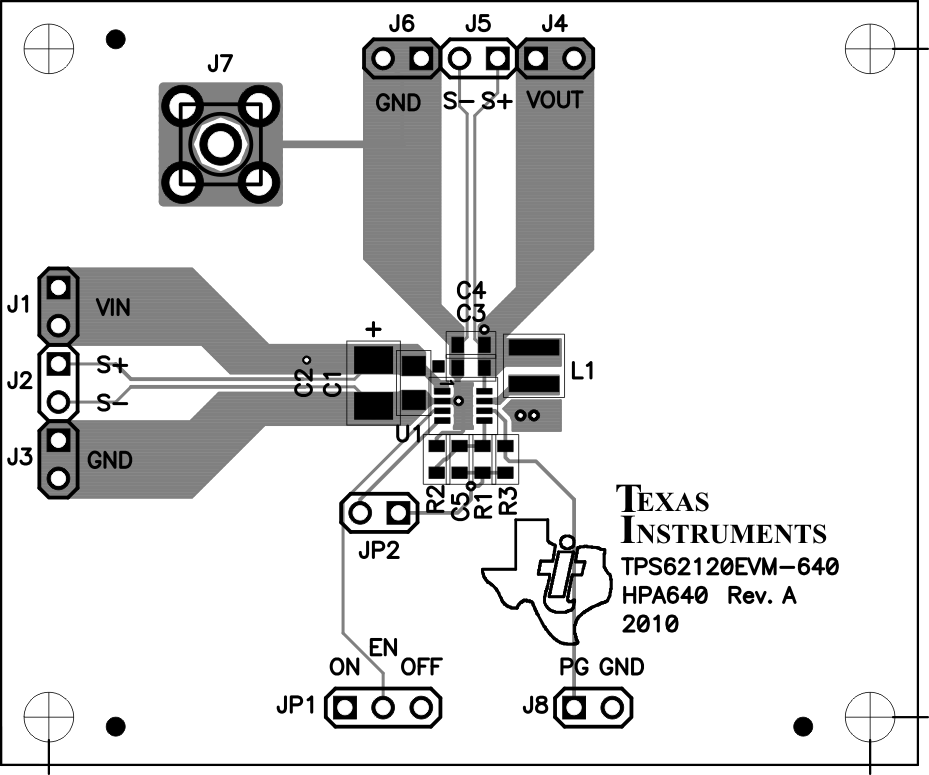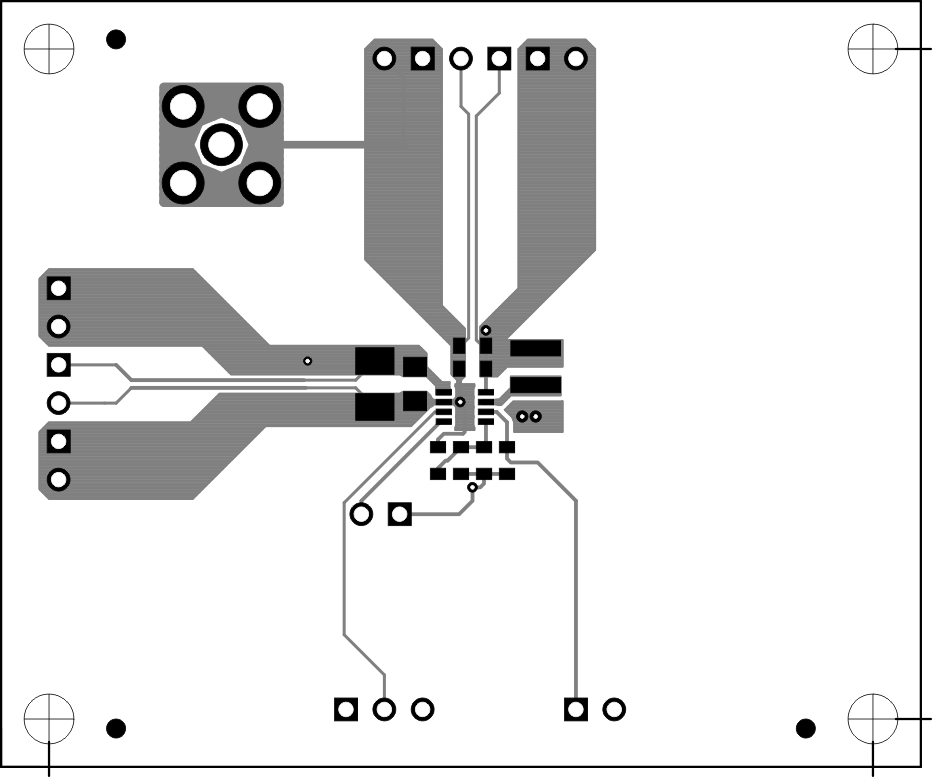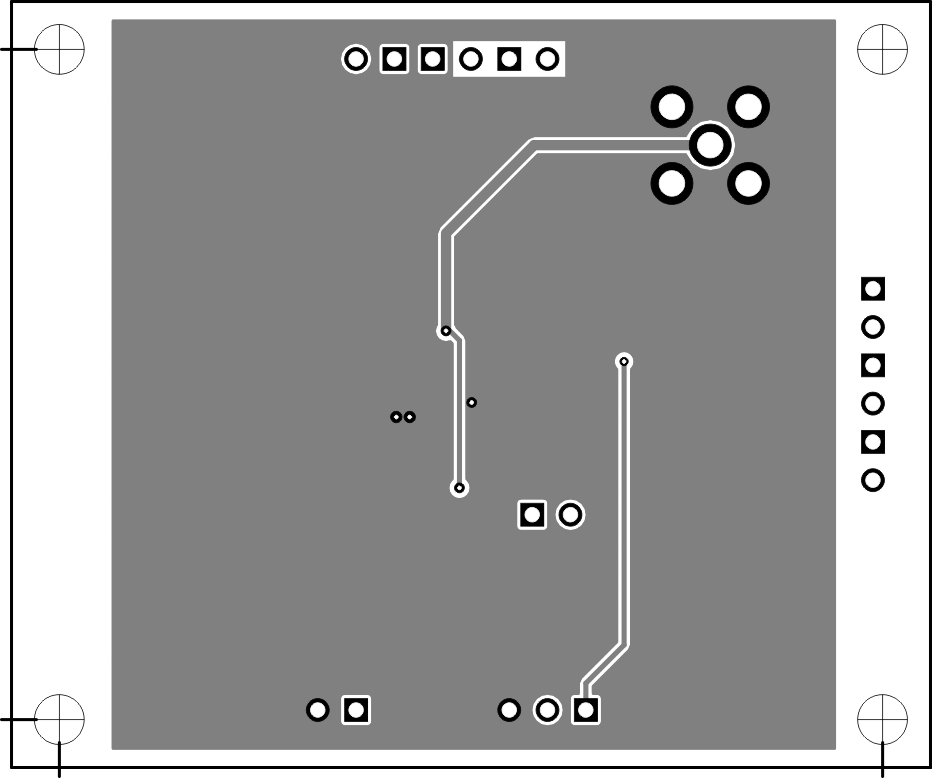SLVU411A September 2010 – June 2021 TPS62120
6 TPS62120EVM Assembly Drawings and Layout
Figure 6-1 through Figure 6-3 show the design of the show the design of the TPS62120EVM-640 printed circuit board. The EVM has been designed using a four-layer, 1-ounce copper-clad PCB.
Note:
Board layouts are not to scale. These figures are intended to show how the board is laid out; they are not intended to be used for manufacturing TPS62120EVM-640 PCBs.
 Figure 6-1 TPS62120EVM Component Placement (Top View)
Figure 6-1 TPS62120EVM Component Placement (Top View) Figure 6-2 TPS62120EVM Top-Side Copper (Top View)
Figure 6-2 TPS62120EVM Top-Side Copper (Top View) Figure 6-3 TPS62120EVM Bottom-Side Copper (Bottom View)
Figure 6-3 TPS62120EVM Bottom-Side Copper (Bottom View)